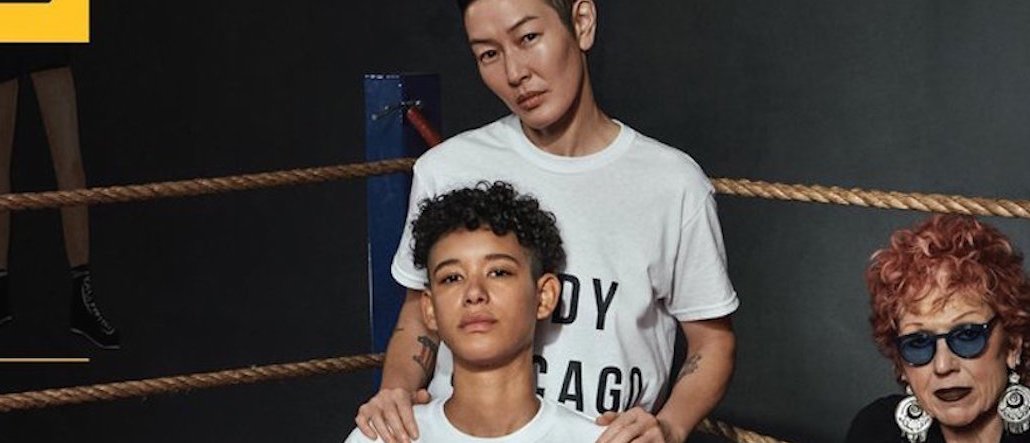Editor-in-chief Hanya Yanagihara on why T Magazine needed a ‘harder edge’

T Magazine, the fashion and style publication of The New York Times, is revamping both its design and editorial strategy to better resonate with an evolving demographic of readers and advertisers.
The aesthetic updates — which rolled out digitally on February 7 and will debut in Sunday’s print issue on February 18 — are intended to reflect a “newsier” tone that is more visually congruous to the rest of the paper, according to Hanya Yanagihara, editor-in-chief of T Magazine. Yanagihara, who returned to T in April 2017 after previously working as the magazine’s deputy editor in 2016, said the new look is intended to better encapsulate the magazine’s shifting voice as it increasingly explores the intrinsic link between art and culture in today’s political climate.
“It captures the urgency of the time and the moment,” she said. “Fashion, art, culture, design — all of these respond to what’s happening in the moment. We wanted to reflect that urgency — on the runway or in the way people are creating art and connecting politically — and for the magazine to have a slightly harder edge and feel.”
Yanagihara — who also previously served as an editor at Condé Nast Traveler and won the Man Booker Prize for fiction in 2015 — is particularly focused on expanding T’s global approach to coverage. From a regional respective, this means identifying trends that transcend the traditional epicenters of style including New York, London, Paris and Milan. An upcoming feature focuses on the rise of small Belgian-owned hotels popping up across Iran.
“The magazine has always been at its best in the moments when it’s responding to politics or war or discourse in the world, and explaining why it’s happening and what it means,” she said. “That doesn’t mean there aren’t simply things in the magazine that are beautiful for the sake of being beautiful. I would argue there is more of a need for that now.”
As an Asian-American woman, Yanagihara has also ushered in a more inclusive approach to coverage, including this Sunday’s cover story on popular feminist artist, Judy Chicago. And she cited a piece that ran online this week on classic portrait painting, tied to the unveiling of Michelle and Barack Obama’s presidential portraits. Beyond serving as an examination of the intricacies of portraiture as an art form, it grapples with racial disparities in painting, given that, historically, such depictions of individuals in power have been overwhelmingly white.
“In an era in which the very idea of truth is so fraught and fungible, there’s something reassuring about art returning to things that refer to what they’re supposed to. In representation, there’s a sense of clarity and truth,” she said.
T Magazine will also amp up its video content in the coming months, increasing the frequency of popular video series like “Read T a Poem” and “Tell T a Joke,” short clips of celebrities reading famous poetry and making wisecracks on camera, respectively. Despite the publishing industry’s myopic focus on “pivoting to video,” Yanagihara said the team has been cautious to ensure forays into multimedia are particularly high quality.
“I don’t believe in video just to do video. We do it only when we think there’s a real reason to do it and the story lives best in that medium,” she said. “I’m old enough and came of age in media to know there’s a lot of doing things just because you could. If you’re going to do video, you need to earn the right to do video.”
A recent “Read T a Poem” video shared on T Magazine’s Instagram page
Though T Magazine announced in early 2017 that it would scale back its print issues from 13 issues a year to 11, Yanagihara said the print magazine will continue to serve as a guidepost for the entire publication. However, enhancing T’s digital presence has been a crucial effort: With the help of creative director Patrick Li, the site rolled out new custom fonts, while maintaining its traditional clean lines and ample white space.
Elizabeth Lunny, publisher of T and vp of media at The New York Times, said the publication’s digital evolution under Yanagihara’s leadership will serve as an advantage to strengthening existing relationships with advertisers, while forging new partnerships with luxury brands.
“As a product of The New York Times, and now especially under Hanya’s direction, luxury brands will recognize that T’s journalistic quality, affluent readership and high engagement are what make T the premiere destination for reaching their desired audiences,” she said.
More in Media

Podcast companies turn to live events to capture growing advertiser spend
The surge in the number of live podcast events in 2025 reflects a broader shift: advertisers are betting bigger on podcasts — not just as an audio channel but as a full-fledged creator economy play.

Media Briefing: ‘Cloudflare is locking the door’: Publishers celebrate victory against AI bot crawlers
After years of miserably watching their content get ransacked for free by millions of unidentified AI bot crawlers, publishers were finally thrown a viable lifeline.

How Vogue could navigate potential industry headwinds as Anna Wintour — who agency execs say made ad dollars flow — brings on new edit lead
Anna Wintour’s successor at Vogue will have to overcome the myriad of challenges facing fashion media and the digital publishing ecosystem.









